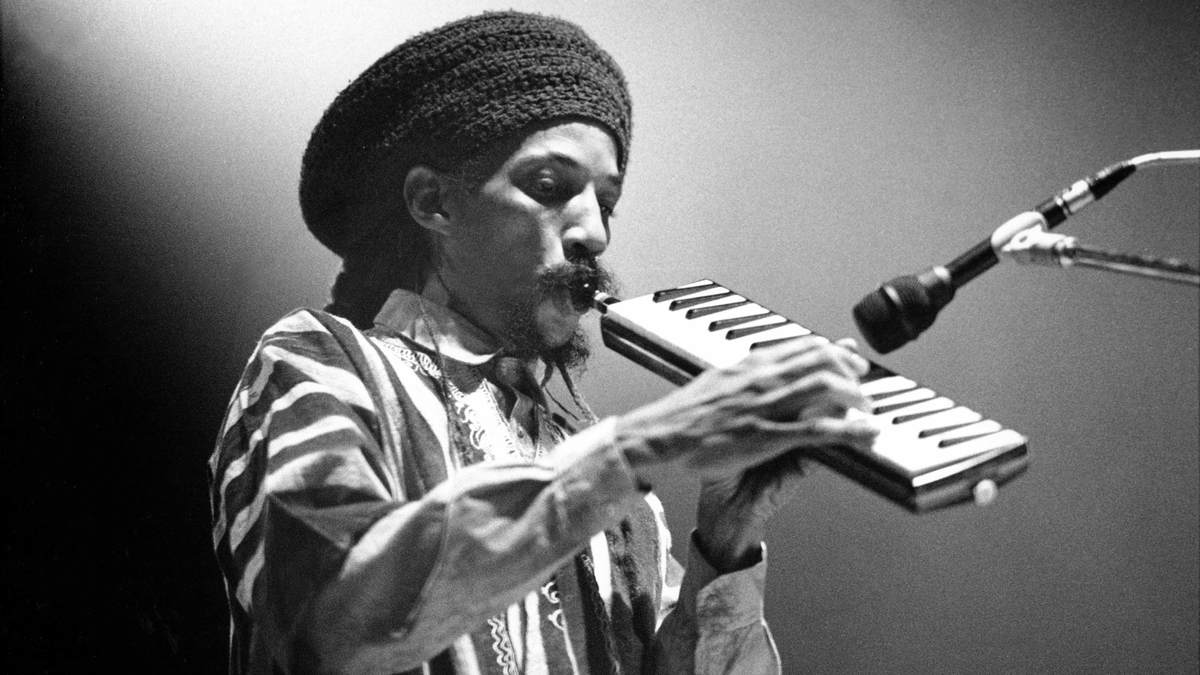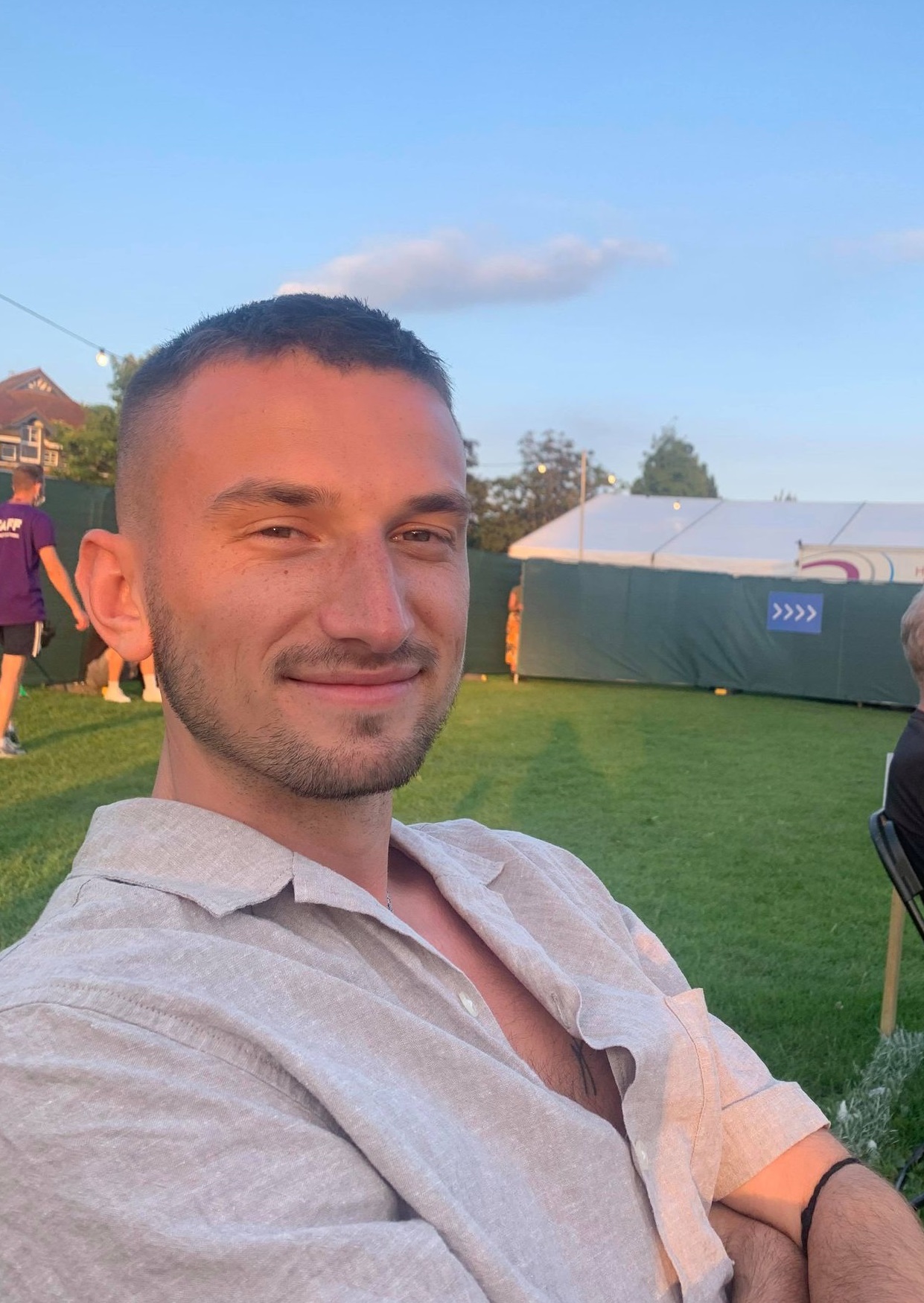"I can't really say why it caught on, but if people think something sounds good, they'll use it": A brief history of the dub siren
We explore the evolution of an instantly recognisable sound effect that originated with early dub music before becoming synonymous with jungle and UK bass

The climax of the 1980 cult film Babylon — a searing documentation of sound system culture, racism, and state oppression in Thatcher-era south London — oozes with tension. In a cavernous, low-lit venue where off-beat keys bounce and crash against the walls, legendary UK sound system pioneer Jah Shaka performs live in a sound clash against the Ital Lions, toasting whilst swaying from side to side.
Occasionally, we cut to shots of protagonist Blue (played by Aswad's Brinsley Forde) speeding south on a packed Victoria Line train to Brixton, just moments after a violent altercation with a white man who racially abused him. His head is spinning, and the music that accompanies his journey deepens the feeling: rising above a fat bassline and a stripped-back dub rhythm, there's a cacophonous flurry of swirling, futuristic effects, space echoes that bring to mind a sound clash taking place on the moon.
These whizzes and whirrs, which we hear consistently across Babylon as director Franco Rosso builds drama and transitions between scenes, come courtesy of a hugely important device that has sometimes been overlooked in conversations around modern British-Jamaican music: the dub siren.
Dub music originated in Jamaica in the late 1970s, when recording engineers began cutting dubplates without vocals, stripping rhythms back to the basics, and experimenting with different echos, controls, and effects. The mixing desk was turned into an instrument, and DJs soon began playing with additional devices, one of which was the siren sound effect.
Typically, siren sounds would be produced by an analogue synth, a little box with a button or trigger that creates a sine wave, alongside separate knobs and buttons for controlling pitch and speed. Various devices have been embraced by dub and reggae artists over the years, but it's widely thought that the first dub siren to gain traction in the UK was the NJD SE-1.

Set up in the Merseyside town of St. Helens in 1973, NJD (aka New Junktion Discotheques) is a UK company known for manufacturing a wide range of products including speakers and mixers. Today, some of their early sirens are available online for just over £100, but their relatively simplistic design (in one online forum, a critical user describes the NJD SE-1 as a "mickey mouse siren that was originally meant for installing in public address systems to warn people about emergency alerts") means many sound systems have been building their own sirens for years. But back in the late 1970s, the noises you could produce with an SE-1 or a similar device became a source of inspiration for dub artists looking to add something extra to their repertoire.
It's unclear exactly who the first artists to use dub sirens were. King Tubby and Lee 'Scratch' Perry were both early adopters; the latter's 1973 album Upsetters 14 Dub Blackboard Jungle (better known as Blackboard Jungle Dub) used wailing siren effects on tracks like the opener 'Black Panta'. According to a forum post on Speakerplans, Tubby produced similar effects when playing live, using "the tone button on his mixing desk in combination with a high pass filter and tape delay."
Want all the hottest music and gear news, reviews, deals, features and more, direct to your inbox? Sign up here.
As sound systems continued popping up in UK cities in the late 1970s (over 20 years after Duke Vin set up the UK's first in 1955), a handful of musicians cottoned onto the value of sirens. Alongside the aforementioned Jah Shaka, one of those people was Mikey Dread, head of iconic London sound system Channel One.
"A few of us were using sirens, but everyone had something different," he says, reflecting on those days. "You have to know how to use it at the time, it's not something you can use all through the session because it would drive you nuts. If you have good timing, then it will work, if you have bad timing then it doesn't work."
"All of a sudden in the 2000s there was another burst and everyone wanted to start using sirens again"
"People identify Channel One with that type of sound," he continues. "A sound system and a siren have to have their own ID. To be honest, not a lot of sound systems are known for sirens, even if they have them on their equipment. At one point nobody was using sirens except me and Aba-Shanti-I and Shaka, so we basically kept it going. Nobody saw the need for it anymore, then all of a sudden in the 2000s there was another burst and everyone wanted to start using sirens again. It's a whole different ball game now."
It's true that the landscape has shifted dramatically. Dub sirens emerged as a fresh-sounding creative flourish, capable of lifting a track and intensifying the atmosphere within a genre built around ambient sounds. But as dub, reggae and sound system culture gave birth to new forms of music, the use of these effects changed.
The cultural role of dub sirens in the UK changed with the growth of jungle music in the early 1990s
At times, the heavy use of dub sirens on Jah Shaka's 1982 album The Commandments of Dub - Chapter One creates the impression of a kid playing with a new toy on Christmas Day. The benefit of this is that we hear a wide variety of techniques, from the slightly fuzzy police siren-esque rings at the start of 'Verse 2' to the high-pitched whistles and pops in 'Verse 6', reminiscent of the flutey chatter of the moon-dwelling characters in 1970s kid's TV the Clangers. What remains consistent throughout the project is that sirens are dropped in and out intermittently across lounging, low-tempo dub reggae backdrops, with Shaka able to experiment freely on a wide-open canvas.
The cultural role of dub sirens in the UK changed with the growth of jungle music in the early 1990s. There was one song in particular that had a huge impact: DJ Gunshot's 1994 track Wheel Up. Jumping between hefty breaks and lighter sections guided by a soulful sample of Mary J. Blige's Sweet Thing, the track kicks off with a now-iconic clip from Top Cat's 'Request The Style' ("Special request to all the gyaldem from north, south, east and west…") before an arresting siren sound blares out and gives way to a deep bassline.
DJ Gunshot's sound effect — now often referred to as the 'Wheel Up siren' or 'Wheel Up signal' — has since entrenched itself within UK jungle folklore. It's tighter and more compact than many of the dub sirens that ebbed out from sound systems in the 1980s, a fierce and reverberant "doolooloolooloo" noise that rings out with real warmth. For many UK ravers, it's an evocative sound that brings back memories of high-energy jungle, D&B, garage and breaks sets, underlining how sound system culture gave birth to numerous innovative genres.
On YouTube, a five-second-long video titled 'OG dub siren' has re-introduced the iconic sound to many who have been trying to hunt it down having heard it at events repeatedly. The fact that the video has been swamped with grateful comments like: 'I’VE BEEN LOOKING FOR THIS SOUND FOR SO LONG I DIDN’T KNOW HOW TO DESCRIBE IT' and 'why was this so hard to find and to describe?!?!' shows the powerful quality this effect can have. The jungle dub siren has taken on a life of its own, with dozens of artists sampling DJ Gunshot's sound and establishing it as a cultural staple.
There are 90s UK garage classics like Teebone, Sparks & Kie's Fly Bi and Double 99's Ripgroove, and there are underground UK bass cuts like Mella Dee's Keep On. More recently, new-gen junglist pioneer Nia Archives has produced several tracks sampling the Wheel Up siren, including her 2022 hit Baiana. All these songs highlight how the modern dub siren is able to add weight to a track while simultaneously paying tribute to the founding fathers of UK sound system culture who first recognised the potential of this particular sound effect. Crucially, most of these tracks use the Wheel Up signal to punctuate moments of quiet and tension before a beat drops, reinforcing Mikey Dread's belief that timing is everything when it comes to the use of this tool.
"I can't really say why it caught on, but if people think something sounds good, they'll use it"
"They follow on from what Shaka did, they follow on from what I did, and they follow on from what Ashanti did," Mikey says. "I can't really say why it caught on, but if people think something sounds good, they'll use it. Nowadays, there aren't a lot of times where I use the dub siren, but it's there when it's needed. It's got to be in the moment." Some people have suggested that the success of sirens in dub music and affiliated strands of sound system culture is fuelled by a desire to replicate the noises of the streets in music, and Mikey agrees that "that's a part of it, if it works on the record that you play."
But the dub siren is about far more than just imprinting the sounds of urban everyday life into the music. It's a sound effect that boosts atmosphere and adds a futuristic feel to proceedings while encapsulating the spirit of experimentation and live energy that is so essential to dub music. And the continued success of UK jungle and other sound system-affiliated movements, led by an abundance of artists intent on crediting the sound system pioneers that came before them, means the dub siren is here to stay.
Fred Garratt-Stanley is a freelance music, culture, and football writer based in London. He specialises in rap music, and has had work published in NME, Vice, GQ, Dazed, Huck, and more.


